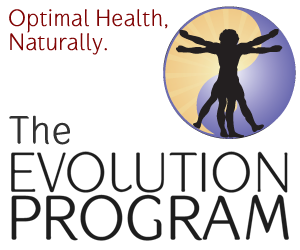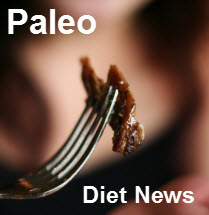Paleo Diet: Glutathione Protects Against Asthma
Just today, March 31st 2012, Chris Masterjohn published a brand new article on the Weston A. Price Foundation website, entitled “
the-wheeze-how-our-good-friend-glutathione-protects-against-asthma/” target=”_blank”>With the Wave of a Wand, Raw Milk Wipes Away the Wheeze: How Our Good Friend Glutathione Protects Against Asthma”. Yes, with a title of that length, it’s obvious that Chris has a bit of a flare for theater. Here are a few excerpts from the article. Please use the link above to read the whole article on the WAPF site.
“Our valiant, cape-wearing, free radical-wrestling, toxicant-thwarting Raw Milk is back in town with his courageous army of raw food volunteers, and this time their mission is to get our good friend glutathione back in the bronchioles where this talented little tripeptide will make all things new, wiping away the wheeze and taking the anguish out of the asthma.
Children Who Drink Raw Milk Are Less Likely to Have Asthma
In October of last year, the investigators of the GABRIELA study published an analysis in the Journal of Allergy and Clinical Immunology showing that children who drink raw milk are less likely to have asthma (1). The investigators surveyed the parents of almost 35,000 children between the ages of six and twelve living in rural areas of Germany, Switzerland, and Austria to determine how likely they were to live on a farm or to have exposure to farms in some other way. They then selected a random sample of this population with similar rates of farm exposure, sending a much more detailed questionnaire to the parents of over 8,000 children, taking blood samples from over 7,500, and even taking samples of milk from the homes of 800.
The investigators reported the data after adjusting for farm status, specific location, age, sex, breastfeeding, family size, and the presence of asthma in the family tree. The results were impressive. Compared to children who drank only pasteurized milk from the local shop, children who drank raw milk from the local farm on a less than daily basis were forty percent less likely to have asthma while kids who reveled in this rawness on the daily were half as likely to be wrestling with the wheeze.
But wait, was it really the rawness that delivered them? Correlation is never causation no matter how cool the correlation can be, so we can’t attribute any saving grace to the creamy white stuff just yet. But there’s one thing we can say for sure: take out the rawness, and the correlation goes kaput. Children who drank only boiled milk from the farm were 60 percent more likely to have asthma as those who drank only pasteurized milk from the shop, but because there were only a sixth as many of these kids, the association just barely slithered under the statistical radar.
Is there a nugget of causation lying somewhere deep within the heart of this correlation? If so, is it a nugget of sheer nastiness revealing nothing beautiful but only the hidden dangers of heat treatment, or is it a pearl of great price revealing the protective powers of unpasteurized goodness? We can get a glimpse of the likely explanation by putting on our “analytical chemistry” hats and peering into a few of the 800 glasses of milk the investigators collected from the homes of the study participants. Only through deep meditation and the assistance of modern laboratory equipment does the visible world begin to fade from our sight and the glory of our good friend glutathione come to light.”
“How Our Good Friend Glutathione Protects Against Asthma
Serendipitously, while the GABRIELA investigators were studying the relationship between raw milk and asthma, researchers from the Emory University Departments of Medicine and Pediatrics and the Children’s Health Care of Atlanta Center for Developmental Lung Biology were preparing a massive 102-page tome reviewing the relationship between glutathione and asthma. They published it this March in the journal Antioxidants and Redox Signaling (5).
Glutathione plays four major roles within the body:
- Safe storage of the highly vulnerable and potentially toxic amino acid cysteine.
- Protection against oxidative stress.
- Detoxification.
- Cellular communication and regulation of protein function.
Glutathione is generally present in the highest concentrations inside cells rather than outside. Indeed, most cells contain between a hundred and a thousand times more glutathione than is present in our blood. The extracellular fluid of the lungs, by contrast, is an exception to the rule. Glutathione concentrations there are a hundred times higher than in our blood, rivaling the concentrations within many cells. These high glutathione concentrations in lung fluid appear to have at least two special roles:
- A high concentration of glutathione is necessary to maintain the fluidity of mucus.
- Glutathione combines with another chemical called nitric oxide to produce nitrosoglutathione.
Nitric oxide is glutathione’s jet pack. When this G gets his nitrous on, he becomes a bronchodilator 100 times more supercharged than theophylline, a once-common asthma drug that has largely been abandoned because of its side effects. This means that nitrosoglutathione decreases resistance in the airway and increases the flow of air to the lungs — exactly what asthma drugs are designed to do! In fact, nitrosoglutathione dilates the bronchioles by stimulating the same receptors as albuterol, a common asthma drug (6). Inhaled corticosteroids synergize with albuterol by increasing the production of these receptors (7).
Could asthma largely result from a deficiency of glutathione and nitrosoglutathione in the extracellular fluid of the lungs? Data presented in the recent review would suggest so (5). Among the most compelling of these data we find two startling facts:
- Children with severe asthma have three times less glutathione in their lung fluid than healthy adults and two times less than children with moderate asthma, while they have two to four times as much oxidized glutathione. They also have 30 percent less cysteine in their blood, suggesting that they may not have enough cysteine to keep producing the glutathione they need.
- Asthmatics have 70 to 90 percent less nitrosoglutathione in their lung fluid as healthy controls, and nitrosoglutathione becomes undetectable during severe asthma attacks.
Scientists are currently focusing on the role of an enzyme that destroys nitrosoglutathione. The activity of this enzyme is increased in asthma, and researchers are currently studying whether genetic variations or inflammatory insults are responsible for this increase. Test tube studies, however, suggest that glutathione itself suppresses the activity of this enzyme (8). Thus, the more glutathione we have, the more nitrosoglutathione we should have.
It may be the case, then, that asthma results largely from a deficiency of glutathione in the lung fluid while common asthma drugs like corticosteroids and albuterol are simply band-aid solutions aimed at replacing the natural effects of glutathione with cheap imitations.”
Great Chris, but how do we maximize the effectiveness of Glutathione?
“There’s no better way we could help Raw Milk and his courageous army of raw food volunteers in their quest to abolish asthma than to do what any conscientious bystander would do when a panoply of edible superheroes parades through town: put them in our mouths. There are a number of other factors, however, that could help maintain robust glutathione status:
- Eat enough protein, which supports glutathione synthesis and recycling.
- Take in enough niacin, riboflavin, vitamin B6, and magnesium, which support glutathione synthesis and recycling.
- Maintain
a high metabolic rate, which supports glutathione synthesis and recycling.
- Consume collagen-rich animal parts and bone broth to obtain extra glycine, which is needed for glutathione synthesis and depleted in asthma patients.
- Maintain an adequate intake of selenium, which helps glutathione protect against oxidative stress.
- Maintain adequate intakes of vitamins C and E, iron, copper, zinc, and manganese, which contribute to the antioxidant defense system and thereby help spare glutathione.
- Consume plenty of unrefined foods, especially fresh, raw fruits and vegetables. The polyphenols present in unrefined foods boost glutathione synthesis through hormesis, and raw fruits and vegetables contain large amounts of preformed dietary glutathione.
Glutathione, moreover, is unlikely to be the be-all, end-all of asthma. In my article on vitamin D in infant nutrition, for example, I outlined evidence suggesting vitamin A deficiency is also involved.
The scientist in me hopes to see randomized, controlled trials comparing the ability of raw milk, pasteurized milk, UHT-treated milk, and milk-free diets to prevent and treat asthma, and comparing their effects with and without other nutritional treatments, such as the inclusion of liver, bone broth, and other nutrient-dense foods, and dietary or lifestyle interventions aimed at increasing the metabolic rate. In the mean time, self-experimentation using any of these approaches just might bring a breath of fresh air where it is most needed.”
And there you have it….how glutathione protects against Asthma, and more good reasons to drink raw milk. That’s all the commentary you’re getting out of me on a Sunday morning! Until next time, have a great day!
-
If you found this article useful, please click the ‘LIKE’ button below to share on Facebook. We also invite you to leave comments, and join the Paleo Diet News discussion!
Go to www.undergroundnutritionist.com, and download my 30-Day UN-Challenge eBook now……It’s a step-by-step guide to your personal health revolution.
Barry Cripps is a Paleo-based, Certified Nutrition and Wellness Consultant, who operates out of Bowling Green, Kentucky.
For more information please visit: www.undergroundnutritionist.com





